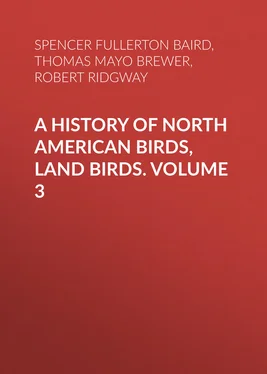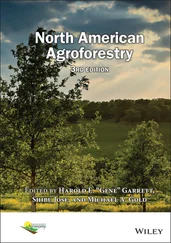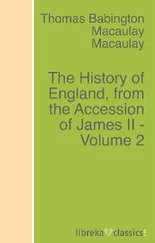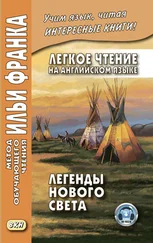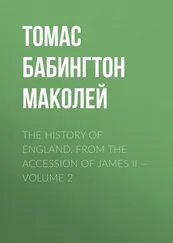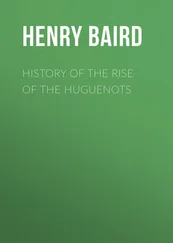Spencer Fullerton Baird - A History of North American Birds, Land Birds. Volume 3
Здесь есть возможность читать онлайн «Spencer Fullerton Baird - A History of North American Birds, Land Birds. Volume 3» — ознакомительный отрывок электронной книги совершенно бесплатно, а после прочтения отрывка купить полную версию. В некоторых случаях можно слушать аудио, скачать через торрент в формате fb2 и присутствует краткое содержание. Жанр: foreign_antique, Биология, foreign_edu, на английском языке. Описание произведения, (предисловие) а так же отзывы посетителей доступны на портале библиотеки ЛибКат.
- Название:A History of North American Birds, Land Birds. Volume 3
- Автор:
- Жанр:
- Год:неизвестен
- ISBN:нет данных
- Рейтинг книги:5 / 5. Голосов: 1
-
Избранное:Добавить в избранное
- Отзывы:
-
Ваша оценка:
- 100
- 1
- 2
- 3
- 4
- 5
A History of North American Birds, Land Birds. Volume 3: краткое содержание, описание и аннотация
Предлагаем к чтению аннотацию, описание, краткое содержание или предисловие (зависит от того, что написал сам автор книги «A History of North American Birds, Land Birds. Volume 3»). Если вы не нашли необходимую информацию о книге — напишите в комментариях, мы постараемся отыскать её.
A History of North American Birds, Land Birds. Volume 3 — читать онлайн ознакомительный отрывок
Ниже представлен текст книги, разбитый по страницам. Система сохранения места последней прочитанной страницы, позволяет с удобством читать онлайн бесплатно книгу «A History of North American Birds, Land Birds. Volume 3», без необходимости каждый раз заново искать на чём Вы остановились. Поставьте закладку, и сможете в любой момент перейти на страницу, на которой закончили чтение.
Интервал:
Закладка:
Adult male. Tail light ash, tipped with white, and crossed by three or four nearly continuous narrow bands of black (extending over both webs, and crossing the shaft), anterior to the broad subterminal zone, the black of which does not run forward along the edge of the feathers. Inner web of longest primary with seven to nine transverse spots of white. Streaks on the cheeks sparse and fine, not condensed into a “mustache.” Pectoral markings broad clear brown. Ochraceous wash weak across the nape and breast, and along sides, and very deep on the tibiæ. Adult female. Above plumbeous-umber, without rusty margins to the feathers, and without conspicuous black shaft-streaks. Tail with only five (one concealed) narrow bands of pale ochraceous; outer webs of primaries without ochraceous spots; inner web of outer primary with eight spots of white. Young. Like the adult female, but darker. Wing, 7.90–8.25; tail, 5.15–5.25; tarsus, 1.00; middle toe, 1.25. Hab. Entire continent of North America; West Indies … var. columbarius .
b. Adult male not bluish? sexes similar? upper parts with lighter transverse spots.
Adult. Above light grayish-umber, or earth-brown, with more or less distinct lighter transverse spots; secondaries crossed by three bands of ochraceous spots, and outer webs of inner primaries usually with spots of the same. Tail invariably with six complete and continuous narrow bands of dull white. Beneath white, with broad longitudinal markings of light brown, these finer and hair-like on the tibiæ and cheeks, where they are sparse and scattered, not forming a “mustache.” Top of the head much lighter than the back. Young. Similar, but much tinged with rusty above, all the white portions inclining to pale ochraceous. Wing, 7.70–9.00; tail, 5.00–6.30; culmen, .50–.60; tarsus, 1.40–1.65; middle toe, 1.20–1.51. Second and third quills longest; first equal to fourth, slightly shorter, or sometimes slightly longer. Hab. Interior plains of North America, between the Mississippi River and the Rocky Mountains, from the Arctic regions to Texas … var. (?) richardsoni .
c. Adult male not bluish? sexes similar? upper parts without transverse spots, and tail without lighter bands, except at the tip.
Above plain brownish-black; the tail narrowly tipped with whitish, but without other markings; inner webs of the primaries without lighter spots. Beneath pale ochraceous broadly striped with sooty-black. Wing, 7.35–8.50; tail, 5.25–5.75; culmen, .50–.55; tarsus, 1.30–1.62; middle toe, 1.25–1.35. Hab. Northwest coast region from Oregon to Sitka … var. suckleyi .
Falco columbarius , Linn. Syst. Nat. 1766, p. 128.—Gmel. Syst. Nat. 1789, p. 281.—Lath. Ind. Orn. I, 44, 1790; Syn. I, 101, sp. 86; Supp. I, 27, 1802; Gen. Hist. I, 278, 1821.—Daud. Tr. Orn. II, 83, 1800.—Shaw. Zoöl. VII, 188, 1812.—Wils. Am. Orn. pl. xv, fig. 3, 1808.—Jard. (Wils.) Am. Orn. I, p. 254, 1808.—James. (Wils.) Am. Orn. I, 61.—Brew. (Wils.) Am. Orn. I, 683, 1852.—Rich. Faun. Bor. Am. II, 35, 1831.—Aud. Syn. B. A. p. 16, 1839; Orn. Biog. I, 466.—Bonap. Ann. Lyc. N. Y. II, 28; Isis, 1832, p. 1136; Eur. & N. Am. B. p. 4, 1838.—Nutt. Man. I, 60, 1833.—Cuv. Règ. An. (ed. 2), I, 322, 1829.—Less. Tr. Orn. p. 92, 1831.—Forst. Phil. Trans. LXII, 382, 1772.—Swains. Classif. B. II, p. 212, 1837.—Jard. Ann. Nat. Hist. XVIII, 118.—Gosse, B. Jam. p. 17, 1847.—Sagra, Hist. Nat. Cuba Ois. p. 23.—Wedderb. Jard. Cont. Orn. 1849, p. 81.—Hurdis, Jard. Cont. Orn. 1850, p. 6.—De Kay, Zoöl. N. Y. II, 15, pl. iv, f. 9, 1844.—Giraud, B. Long Isl. p. 17.—Blackist. Ibis, III, 315. Tinnunculus columbarius , Vieill. Ois. Am. Sept. I, pl. xi, 1807; Nouv. Dict. Hist. Nat. XII, 104, 1819; Enc. Méth. III, 1236, 1823. Hypotriorchis columbarius , Gray, List B. B. Mus. p. 55, 1844; Gen. B. fol. sp. 11, 1844.—Cass. B. Calif. & Tex. p. 90, 1854.—Woodh. (Sitg.) Exp. Zuñi & Colorad. p. 60, 1853.—Heerm. P. R. R. Rept. II, 31, 1855.—Newb. P. R. Rept. VI, 74, 1857.—Cass. B. N. Am. p. 9, 1858.—Cooper & Suck. P. R. R. Rept. XII, 1860, 142.—Coues, Pr. A. N. S. Phil. 1866, 6.—Brewer, Oölogy, 12. Lithofalco columbarius , Bonap. Consp. Av. p. 26, 1850. Æsalon columbarius , Kaup, Monog. Falc. Cont. Orn. p. 54, 1850.—Gray, Hand List, I, 21, 1869. Falco obscurus , Gmel. Syst. Nat. p. 281, 1789.—Lath. Ind. Orn. p. 44, 1790; Syn. Supp. I, 38, 1802; Gen. Hist. I, 272, 1821.—Daud. Tr. Orn. II, p. 123, 1800. Falco intermixtus , Daud. Tr. Orn. II, p. 141, 1800.—Lath. Gen. Hist. I, 136, 1821. F. temerarius , Aud. B. Am. pls. lxxv, xcii, 1831; Orn. Biog. I, 380, 1831. F. auduboni , Blackw. Res. Zoöl. 1840. Accipiter palumbarius , Catesb. Carol. I, pl. iii, 1754.
Sp. Char. Adult male. Above cinereous, varying in shade, but generally of a slaty-bluish cast; each feather with a distinct shaft-streak of black, these lines most conspicuous on the head above. Tail with a very broad subterminal band of black, about one inch in width; there are indications of three other bands, their continuity and distinction varying with the individual, but generally quite conspicuous, and each about half the width of the terminal one; the subterminal black band is succeeded by a terminal one of white, of about three-sixteenths of an inch in width, sometimes broader; on the lateral feathers the black bands are always conspicuous, being in form of transverse oblong spots, crossing the shaft, but less extended on the outer web, which is often immaculate except at the end, the broad terminal band always extending to the edge of the feather. Primaries dusky-black, margined terminally more or less distinctly with whitish (sometimes fading on the edge only); on the inner web is a series of about eight transverse oval spots of white, and generally corresponding to these are indications of bluish-ashy spots on the outer web. Beneath white, this purest on the throat, which is immaculate: there is generally a more or less strong tinge of fulvous beneath, this always prevalent on the tibiæ, and on a distinct collar extending round the nape, interrupting the blue above; the tibiæ frequently incline to ochraceous-rufous. Lateral portions of the head with fine streaks of dusky, these thickest on upper edge of the ear-coverts, leaving a distinct whitish superciliary streak, those of opposite sides meeting on the forehead. Breast, upper part of the abdomen, sides, and flanks, with longitudinal stripes of umber, each with a shaft-streak of black; on the flanks their shape is modified, here taking the form of spots running in chain-like series; tibiæ with narrower and darker streaks; lower tail-coverts with narrow central streaks like those on the tibiæ. Frequently there is a strong bluish shade on flanks and lower tail-coverts, sometimes replacing the brown of the spots on the former, and clouding in a similar form the latter. Length, 11.00; extent, 23.75; wing, 7.75.
Adult female. Pattern of coloration as in the male, but the colors different. The blue above replaced by dark umber-brown with a plumbeous cast, and showing more or less distinct darker shaft-lines; these on the head above very broad, giving a streaked appearance; white spots on inner webs of primaries more ochraceous than in the male. Tail dark plumbeous-brown, shading into blackish toward end, with five rather narrow ochraceous or soiled white bars, the first of which is concealed by the upper coverts, the last terminal. White beneath, less tinged with reddish than in the male, the tibiæ not different from the other portions; markings beneath as in the male.
Читать дальшеИнтервал:
Закладка:
Похожие книги на «A History of North American Birds, Land Birds. Volume 3»
Представляем Вашему вниманию похожие книги на «A History of North American Birds, Land Birds. Volume 3» списком для выбора. Мы отобрали схожую по названию и смыслу литературу в надежде предоставить читателям больше вариантов отыскать новые, интересные, ещё непрочитанные произведения.
Обсуждение, отзывы о книге «A History of North American Birds, Land Birds. Volume 3» и просто собственные мнения читателей. Оставьте ваши комментарии, напишите, что Вы думаете о произведении, его смысле или главных героях. Укажите что конкретно понравилось, а что нет, и почему Вы так считаете.
